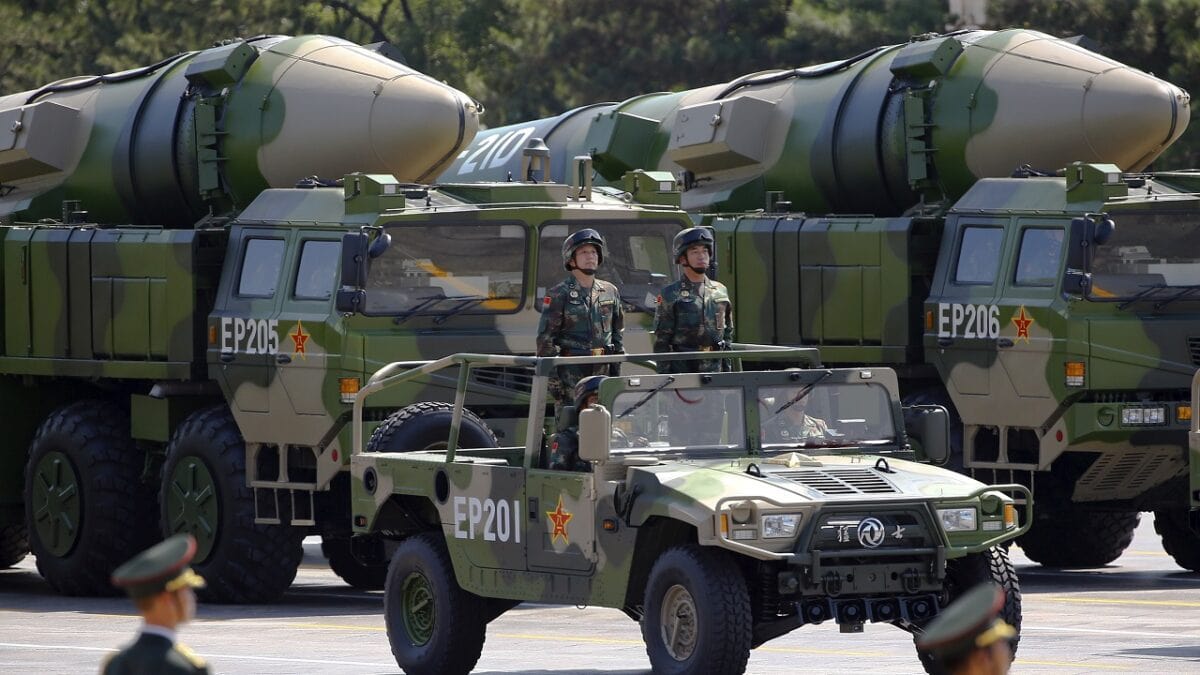The war in Ukraine will indeed create a lot of debate involving the future of warfare and especially in the larger Indo-Pacific region. That means drones could be an even bigger part of U.S. Navy strategy against China in a crisis:
Two seemingly disparate events regarding Iran and the Russia-Ukraine war may give us some ideas regarding the future of naval warfare, and could point the way for U.S. conduct in a conflict in the South China Sea.
In Ukraine, it has been revealed that the Russians have wasted many of their valuable precision-guided weapons on dummy mock-ups. In the Persian Gulf, the Iranians have tried to hijack two U.S. Navy robotic drone reconnaissance ships. They failed, but the incident revealed that the Navy is planning to build many more drone vessels.
Readers are probably wondering what these two seemingly unrelated situations have to do with naval combat in the South China Sea. The answer lies in China’s anti-navy strategy.
In Ukraine, the Russians — and Ukrainians — are employing a sensor-to-shooter set of tactics that counts on two primary components. The first is a system of overhead sensors consisting of satellites, manned reconnaissance aircraft and long-endurance unmanned aerial systems, or UAS. The second component is precision-guided munitions, or PGMs, which will eventually include hypersonic cruise missiles if it does not already.
The Russians are finding out to their dismay that the PGM systems are expensive and take time to produce. Moscow is already running low on them because so many are being wasted on the mock-ups. The Ukrainians are not having the same problem because they are using their operational-level PGMs on hard-to-move command and control and logistics sites. Also, virtually every Ukrainian with a cell phone behind Russian lines can become a sensor cross-verifying intelligence provided by UAS.
Meanwhile, our Navy’s drones are unarmed and used primarily for reconnaissance. Powered by wind and solar, they can stay on station far longer than manned vessels. However, there is no reason why larger versions could not be covered with light mock-up material to make them appear to be the high-value combatants — aircraft carriers, guided missile cruisers and amphibious transports — that the Chinese would target with their anti-navy capability.
The mock-ups could emit signals simulating that of the real combat ships. This is a relatively cheap and easy way to complicate the Chinese targeting problem. Like their smaller cousins, the decoy drones could also act as reconnaissance craft.
The decoys would likely have to be solar-powered or hybrids because sails would reveal their true character. To compound the deception, actual combatants could be fitted out with fake solar panels.
War is a game of moves and countermoves, and every technological innovation is eventually negated by countermeasures. This is where the U.S. potentially holds an advantage.
The Chinese recon strike complex is by nature centralized. The fighting traditions of the U.S. Navy, like its British counterpart, have always been decentralized, counting on the initiative of local commanders. As the Russians are finding, in a centralized system, command posts are a critical vulnerability.
This is not as much of a problem for us. If all of our major naval headquarters in Hawaii and the western Pacific were destroyed, our Navy would continue to operate. Some wags among junior officers would probably opine that it would improve overall performance.
To destroy a major U.S. combatant, the Chinese will have to fire many PGMs to overwhelm the impressive air defenses of Navy task groups. This presents two problems. First, as previously mentioned, these systems are expensive and take time to produce. Second, every time a launcher fires, it needs to move. This makes it a target and takes it offline while redeploying.
If the Chinese cannot take out our entire Indo-Pacific fleet — including U.S. Air Force airpower — in a coup de main, or a sudden surprise attack, they become boxed into a war of attrition. Like the Ukrainians, the U.S. and its Indo-Pacific allies have sanctuaries beyond China’s reach to resupply ships and personnel. This will be exacerbated if the U.S. and its allies begin to target Chinese military production and transportation infrastructure.
Except for insurgents, no one in his right mind starts a war hoping it will be long and bloody. Wars tend to mutate beyond what was expected by those who initiate them. All sides in World War I expected a short and victorious conflict, as did Adolf Hitler when he invaded Russia and the Japanese high command when it attacked Pearl Harbor.

Military vehicles carrying DF-21D ballistic missiles roll to Tiananmen Square during a military parade to mark the 70th anniversary of the end of World War Two, in Beijing, China, September 3, 2015. REUTERS/Damir Sagolj
Russian President Vladimir Putin is the latest victim of the mutation of war. During the 20th century, 50% of wars failed to achieve the results desired by the side that started them. What should be more disturbing for China’s war planners is that 20% of regimes that started the conflicts collapsed by the war’s end.
Mutation favors the defender. The Ukrainians realize this and are introducing as many variables into the equation as possible to catalyze mutation. Deception has become a very powerful catalyst. Our Navy should consider this for incorporation into its strategic planning.
Gary Anderson lectures on Wargaming and Red Teaming at George Washington University’s Elliott School of International Affairs.

